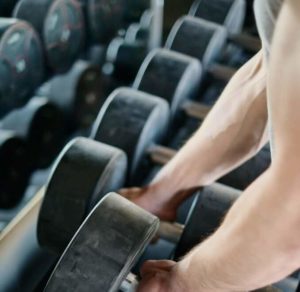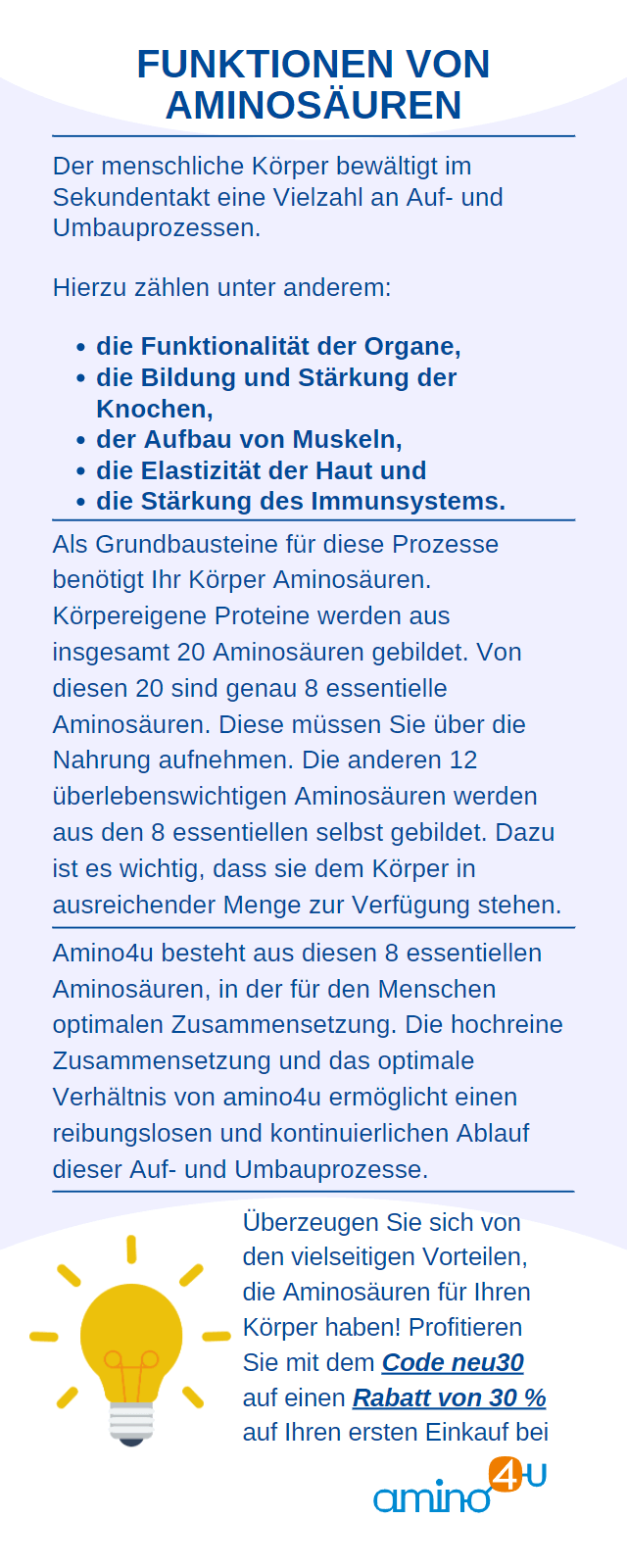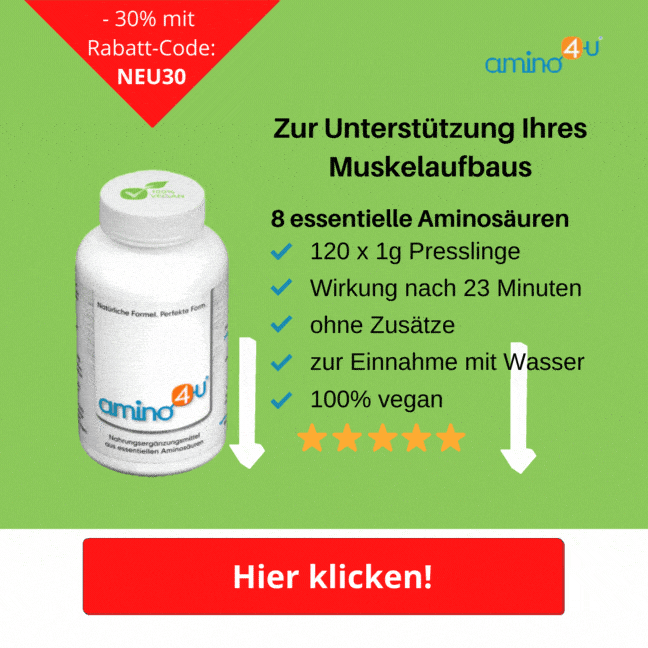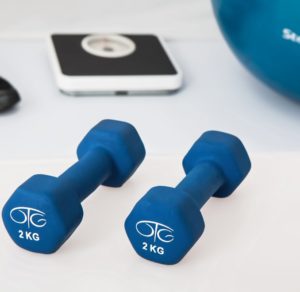If you want to be fit and have a muscular, toned body, you should train hard and eat right.
No matter whether in the gym or when training in your own four walls: the interaction of training and nutrition forms the basis for quickly and effectively building muscle mass.
Individually tailored training is usually part of it, but it does not necessarily have to mean a lengthy process before success can be seen. There are now good ways to build muscle quickly . We have the best muscle building tips for you.
How does (rapid) muscle building work in the human body?
Building muscles goes hand in hand with increasing the size of the entire musculature in the body. You can achieve this with muscle building training, which we technically call hypertrophy training.
Such hypertrophy training directly contributes to the growth in thickness of the individual muscle fibers, which then increases the muscle circumference or overall cross-section.
But this only works if you challenge the muscles beyond their normal and usual performance level.
Through intensive training, you generate training stimuli that cause so-called micro-tears in the muscles being stressed, which ultimately leads to muscle soreness.
Seen this way, sore muscles can be a good sign of a promising training session . Even more important, however, are the recovery phases that a trained muscle urgently needs. During this time, your body repairs the damaged fibers.
And not only that. He can also thicken them to create a better physical basis for further stress of this kind. This process is referred to in training theory as supercompensation .
Targeted training and the benefits for building muscle
However, the path to get there can be rocky and hard. Just swing the dumbbells and success will come on its own - it doesn't usually work that way.
If you want to be beautiful, you have to suffer (at least a little) for it. An aesthetically defined and fit body not only helps you look better, attract more attention and increase your self-confidence.
In fact, your general health also benefits from more muscle .
Because muscles and an overall strong muscle corset can prevent pain. If there is a lack of muscle, this often comes at the expense of stability, which can result in poor posture.
The back in particular is considered a risk and problem area. Poorly developed back muscles tend to become tense, which in turn can lead to incorrect posture.
This often causes problems with the musculoskeletal system, causes pain and is often manifested by headaches, for example.
Several scientific studies, such as a current study by the Technical University of Dresden, confirm the connection between poor posture due to neglected back muscles and headaches .
With targeted strength and muscle building training, you can prevent tension, poor posture and the resulting back pain and headaches.
Do you already have back pain?
In this case, too, you should not forego appropriate fitness and strength training.
Quite the opposite: you can strengthen your back muscles sustainably through training, which in many cases significantly relieves or even completely eliminates back pain.
The muscles are our biggest fat burners
Do you actually know that building muscle can also help you lose weight? That's exactly what it can do - as the largest fat burner in the human organism.
And even around the clock. You don't even necessarily have to be physically active to do this. Thanks to the so-called muscle tone , which you can understand as a kind of basic tension, your muscles are always ready.
They constantly use energy. Around a quarter of the energy converted by your body can be used to constantly fuel your muscles.

More muscle also means losing weight faster?
What this means is obvious: the more muscles you train, the higher the need for energy and therefore the fat burning can be.
The increased basal metabolic rate of energy can bring you decisive advantages. You can eat more food without getting fatter.
In principle, it may be easier for you to maintain your weight and you will also lose weight more quickly if you aim to lose weight.
In addition, well -trained muscles can protect your joints and bones . The muscles that do their work around the joints and bones protect and stabilize them with their strength.
If the muscles cannot fulfill this protective function, you would probably dislocate your shoulder or break your knee, for example.
Is targeted muscle building suitable for all ages?
The public usually associates strength training with relatively young people. The age group of 20 to 40 year olds in particular has increasingly come into focus here.
But reality paints a different picture here. The over-40 generation has long since discovered strength training for themselves. This also includes the targeted building of muscles .
Through individually tailored muscle building training, you can sustainably increase your muscle strength and mass .
If you do not train your muscles through explicit dumbbell training or through exercises based on your own body weight, you may lose muscle mass continuously from the age of 30.
A total of 656 muscles control the human body in an extremely complex interaction. While some muscles, such as the heart muscle, act automatically, you can activate your abdominal muscles or the biceps more consciously.
If you don't challenge the trainable muscles or only do so insufficiently, your muscle mass can continue to decrease over the course of your life . As a result, there is a possibility that your body stability will be reduced.
From a medical perspective, this can lead to sarcopenia . This is the technical term for a severe loss of muscle strength and muscle mass .
Targeted training is possible regardless of age
A complex overview study from 2011 is particularly worth mentioning in this context.
Accordingly, strength training can lead to a comparatively significant and rapid increase in muscle strength and mass, even in people aged 60 and over.
According to the study results, strength training in people of this age group can lead to both a holistic increase in muscle volume and a sometimes significant improvement in the respective motor units or functions.
Accordingly, muscle building still works well in old age .
You should constantly challenge your body and muscles. Only then will you successfully set training stimuli to which the body can respond.
To achieve maximum muscle growth, experts recommend that you train at high volumes and intensities until clearly visible fatigue.
This can lead to the greatest successes quickly Achieve muscle growth .
Muscle soreness and regeneration phases
Muscle burning or muscle soreness may occur after training. These symptoms are indications that you have partially overexerted your muscles.
They show whether your training has irritated the relevant muscles . If you are just starting out with strength training, you shouldn't overdo it right away.
This may have a counterproductive effect. Instead, as a beginner, you should only challenge or train a muscle to its maximum load.
If you are already at an advanced stage of training, you should push the strain on the trained muscles to the limit. Several sets of a training session are advisable for successful and rapid muscle growth .
Particularly committed strength athletes can do ten complete sets or even more for particularly large muscle groups, such as the quadriceps on the thigh.
But be careful: Don't overdo it and give the trained muscles at least two to four days of rest after your intensive exercises and training sets, giving them enough time to regenerate.
During this time, the muscle fibers should thicken, which can lead to muscle growth.
Sports scientists have shown in studies and papers that muscle protein synthesis, the buildup of proteins within the muscles, is increased between 24 and 72 hours after training; for well-trained athletes only a maximum of 48 hours.
Valuable proteins collect in the muscle, which can stimulate muscle building .
The body therefore needs this time to rebuild the muscle cells after the last training session.
What does this mean for your individual training program?
In practice, this means that you can always train muscle groups about two to three days apart in order to achieve optimal results in terms of muscle building and muscle hypertrophy.
In this way , muscle building can work quickly .
Training plan & tips: quick muscle building
Fitness, strength training and muscles are often defined by regular training. In this regard, increasing strength is often associated with the body's own adaptation processes.
It is important to follow certain training principles and training rules. These are our muscle building tips that ensure rapid muscle growth :
- As a beginner, train two to three times a week. Advanced users should work on muscle growth up to five days a week. Around 30 to 60 minutes per training session is considered ideal.
- You should choose the weights so that you can only do eight to twelve repetitions. You have selected the right weight exactly when you have difficulty completing the final exercises.
- Beginners should aim for a movement speed of around five seconds for dumbbell sessions. This means: two seconds for lifting the dumbbell, one second for the dumbbell to remain in a static position and two seconds for the downward movement. This time grid or these phases can of course also work for push-ups and other dumbbell-free exercises.
- Done correctly, just one intensive set is enough to stimulate you to build muscle quickly . However, strength athletes usually complete three sets.
- You should also consistently pay attention to the necessary regeneration phases between sets. You should take at least a minute's break. You can then resume training after three minutes at the latest.
- To build muscle quickly and effectively, ideally choose a weight that is ten percent below your maximum load capacity. Eight to twelve repetitions should be possible with the selected weight. If you can't do eight repetitions, the weight is too high. If even twelve or more repetitions don't pose a big problem, it's too low.
What helps build muscle?
Rapid muscle growth can be supported and sometimes promoted through the right diet. This is a point that should not be underestimated.
Because strength training and regeneration alone are not enough to make muscles grow quickly. The diet and the corresponding nutrient content must also be right.
Fast muscle building: what else is important?
Just water
Low-sodium mineral water should be part of your diet. Sodium can bind water within cells. This can prevent the cells from swelling.
You should also pay attention to the magnesium and calcium content. Both substances supply your body and explicitly also your muscles with important minerals .
Three to five liters a day are recommended. This is usually enough to compensate for the fluid loss caused by sweating during strength training.
Certain carbohydrates
Without carbohydrates, you have no energy for training. They are essential for providing the required energy. But here too you should differentiate between “ bad ” and “ good ” carbohydrates.
The carbohydrates you need for rapid muscle growth can be found, for example, in legumes, various vegetables or whole grain products.
Instead, you should avoid white flour products, sweets and ready-made products, which usually contain huge amounts of sugar.
Foods or carbohydrates of this type can severely hinder the chances of success in building muscles quickly.
Unsaturated fatty acids
Monounsaturated or polyunsaturated fatty acids are considered the good fats and are important for building muscle quickly .
Salmon and similar fatty fish, various vegetable oils, nuts and avocados are particularly rich in unsaturated fatty acids.
The fatty acids contained in these foods can promote rapid muscle building .
Saturated fatty acids, on the other hand, can be found in ready meals, fries, sausage or chips. These fats are not necessarily beneficial for building muscle quickly.

Proteins or amino acids and vitamins for building muscle
Proteins and amino acids
Proteins are the most important building materials for building muscles quickly . They are what make your muscles grow after an intense and strenuous workout.
Since humans do not have their own protein storage, a protein-rich diet is an extremely important factor for training success.
Only then can you maintain the desired training intensity and stimulate muscle growth with new stimuli. However, it is primarily the amino acids as amino acid proteins that are important here.
Our body produces some amino acids itself. However, you should get essential amino acids through food.
Good sources of proteins and amino acids include meat, fish, legumes, dairy products and nuts. It is advisable to also take essential amino acids as a food supplement .
Four important vitamins
If you do strength training, it is advisable to boost your vitamin supply. In addition to vitamin C and vitamin E, you should especially monitor your intake of vitamins B1 and B6.
Vitamin B1 can reduce fatigue in the body, while vitamin B6 can play a crucial role in protein metabolism. These vitamins can promote rapid muscle building .







